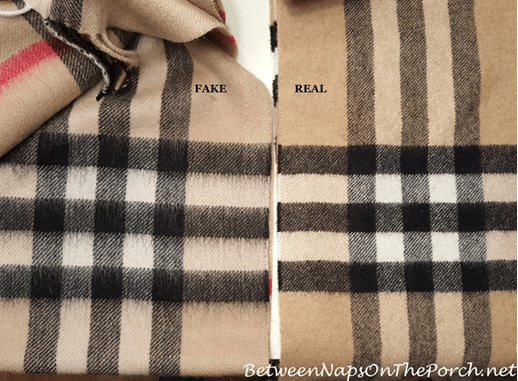Guest post by Jean from Le Meilleur Avis.
Cashmere is wool fiber acquired from the undercoat of goats that are bred to generate wool (cashmere goats).
Cashmere is rare and expensive because it can only be obtained once every year when the goats shed.
Additionally, the amount of cashmere produced by one Cashmere goat is about 8 ounces which reduce to 4 ounces when processed.
So it may take 4 goats to make one cashmere sweater.
Unfortunately, there are many fake cashmere products in the market or some that are not 100 percent pure.
Therefore, lab tests are used to test the purity of the wool to separate the real from the fake.
Here are the different cashmere tests you can use:
The Softness Test
The softness test is the main way to determine if a cashmere product is authentic.
So if an alleged cashmere product makes your skin itch, then it is not genuine.
The reason why real cashmere is soft because it has fibers of exceptionally fine diameter (less than 18.5 microns).
Cashmere fiber is not straight like Angora. It is bumpy. Bumpy fibers stick to themselves and do not stick out. This is why cashmere is soft.
Simply rub a cashmere shawl or sweater on your chin to determine its softness.
The Label Test
In most cases, genuine cashmere products will have “100% cashmere” labels because the law requires it.
However, some products may escape purity tests and end up misrepresenting themselves as authentic.
Additionally, the lack of a label should raise a red flag.
The Weave Pattern Test
Cashmere products are woven in a large scale diamond pattern.
Shahtoosh also features a diamond pattern, but it is not as big as the cashmere weave pattern.
The Light Test
Hold the product up to the light.
If the product is authentic cashmere, it will not be thin enough to let you see through.
It will also be a radiant color but not shiny.
A real cashmere product will also be light.
A shiny product indicates the presence of silk since cashmere does not shine.
But it should not be dull either.
The Price Test
Cashmere products are expensive.
So if you find one that is not, then it is not authentic.
On the other hand, if it is too expensive than what you would expect to pay, then it is probably not authentic.
The Name Test
Products that are described as “cashmere feeling” or “cashmere touch” means that they are not 100 percent pure.
Instead, they contain a blend of cashmere, merino wool, and silk.
Related reading: MERINO Wool vs. CASHMERE Wool: Differences and Similarities
The percentage of cashmere may be high or low.
Microscopic Identification Test
When the coarse fibers of a cashmere product are studied under transmitted light, it is noted that the diameter is less and the medullar cells do not seal the entire diameter.
The medulla of the fiber will appear dark once filled with air. Moreover, the scales in the kemp fibers come off as a mosaic diagonally elongated with smooth edges.
When the fine fibers of a cashmere product are examined under transmitted light, the fine fibers appear as block scale patterns arranged close to one another.

The Shawl Fringe Test
Cashmere shawls exhibit long fringes. These fringes can be braided, tied in a single knot, twisted, or left as single fringes. The fringes of a cashmere shawl are longer than those of a shahtoosh.
The Embroidery Test
Generally, cashmere shawls do not have embroidery. They are usually simple and plain. However, some manufacturers have started adding embroidery for the purpose of embellishment.
The Weaver Initial Test
Cashmere products are in most cases hand-woven or hand-knitted because the delicate cashmere fibers require exceptional care when manufacturing. These weavers tend to leave their initials at the corner of the products indicating that it is pure cashmere because it was hand-woven.
The Wiggling Test
Wiggle a cashmere product with your fingers and if it leaves a mark, it is definitely not authentic cashmere.
The Massage Test
Rub the product with your palm and see if it will roll up. If it does, then it is not an authentic cashmere product. Although cashmere may roll up with constant wear, it should not roll up from a hand rub.
The Dye Test
The authenticity of a cashmere product can be determined by the end color.
If the finishing color is rich and full, then the yarn used was clean and high quality. Therefore, you can conclude that the cashmere is authentic.
The Burning Test
Take a thread from the cashmere product and burn it. Authentic cashmere will shrink away from the frame and burn slowly. It will also smell like burning hair.
Other materials like acrylic will burn fast, it will continue to burn even after the flame is removed, it will produce a plastic-burning kind of smell, and generate black smoke.
The Material Description Test
If the material description says pashmina, you should think twice before buying it. This does not mean that pashmina products might not contain 100 percent cashmere.
Pashmina translates to wool fabric meaning that it is not exactly an alternative name for cashmere.
The Knit-Type Test
Loosely knitted or woven cashmere products indicate that very little cashmere or none was used. It also indicates poor quality and non-durable wear.
Last Words
It is recommended that you buy real cashmere products from fiber festivals. For instance, there is a fiber festival held in New York State each summer. Alternatively, buy directly from cashmere farmers online.
Author’s Bio
My name is Jean and I am a technology manager. I’ve been reviewing various products and best prices to get them on LeMeilleurAvis over 5 years now. When purchasing products it is essential to tell the difference between authentic and fake. This article helps you differentiate just that when it comes to cashmere products.


This note is for the author Jean. I am a cashmere farmer in upstate NY thank you for the above information. There is an International Cashmere Workshop (https://www.facebook.com/International-Cashmere-Goat-Workshop-2017-Tuscany-Italy-1453834197989893/) in November in Tuscany Italy where cashmere farmers, scientist, designers are coming together to discuss this amazing fiber and it’s future. We would love to send you an invitation to attend! I’ll be in Rhinebeck this year with my goats if you are attending.
This is a great post. Very informative. Thanks for sharing.
A singularly annoying, and unrelated comment. Why leave it.
Thanks for assisting Jane.
Best,
Helen
Hi
I just purchased a beautiful stark black 100% Mongolian cashmere trench coat by the brand Alorna made in China .It feels luxurious . How do I know it’s authentic? I am looking at reselling and want to price accordingly. Any help you can send my way would be greatly appreciated. Than you.
I just received a gift of a scarf marked 100% cashmere by brand John Henric (Swedish, made in Italy). It feels very soft, but I am very skeptical, because I have NEVER heard of this brand. It cost about $90. I have been researching real, hand woven cashmere scarves that I love for years, and they are $250, from a known specialty brand for cashmere, Chan Luu. Have you ever heard of these brands? Thanks.
“if it is too expensive than what you would expect to pay, then it is probably not authentic.”
This is strange and funny….a full cashmere sweater can be 500-600€ but also can be 2000€
That means that 2000€ is not authentic ?! Come on..
The rest, is spot on
This is my first visit to your blog, your post madeproductive reading, thank you.
I found this very informative and practical. Thank you for sharing your depth of knowledge!